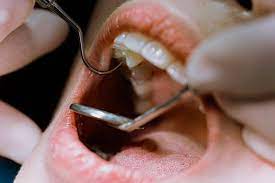If you’ve ever asked, “How does a root canal work on back teeth?”, you’re not alone. Root canals on back teeth—also known as posterior teeth—are common but often misunderstood. Molars and premolars have more complex structures than front teeth, so treating them requires special tools, expertise, and careful planning. The goal is always the same: remove infection, relieve pain, and save the natural tooth. Understanding how this process works will help you feel more confident and prepared if Posterior Root Canal in Dubai is necessary.
Why Back Teeth Are More Complex?
Back teeth play a vital role in chewing and grinding food, and they endure more pressure than front teeth. Because of their function and location, they have unique anatomical challenges that affect how root canals are performed.
Here’s why back teeth require more attention:
- Multiple roots: Molars often have 2–4 roots, each with several canals
- Curved and narrow canals: These are harder to clean and shape effectively
- Difficult access: Their position makes it harder for dentists to reach and visualize the area
- Heavier bite force: Restoration must withstand strong chewing pressure
Due to these complexities, root canal treatment on back teeth is often performed by an endodontist—a specialist in root canal therapy.
The Root Canal Process for Back Teeth:
When asking how a root canal works on back teeth, it’s helpful to break down the procedure step by step. While it shares basic similarities with front tooth root canals, the posterior version is often longer and more intricate.
Here’s what to expect during the procedure:
- Initial exam and imaging: X-rays are used to locate infection and map the root canal structure
- Anesthesia: The area is numbed to ensure comfort throughout the procedure
- Access point creation: A small opening is made in the chewing surface of the tooth
- Pulp removal and disinfection: Infected tissue is removed from the pulp chamber and canals are thoroughly cleaned
- Shaping and sealing: The canals are shaped, dried, and filled with a rubbery material called gutta-percha
- Temporary or permanent filling: A crown is often placed during a follow-up visit to restore full function
This process may take one or more visits, depending on the severity of the infection and the number of canals in the tooth.
Tools and Technology Used:
Performing a Posterior Root Canal on back teeth requires more than just traditional dental tools. Dentists often rely on advanced technology to navigate the intricate root systems safely and effectively.
Commonly used tools and techniques include:
- Dental microscopes: Allow magnified visualization of tiny canal openings
- Digital X-rays or 3D imaging: Provide detailed views of root anatomy
- Rotary instruments: Specialized files used to clean and shape the canals with precision
- Electronic apex locators: Help determine the length of the root canal accurately
These tools enhance the dentist’s ability to clean deeply and avoid complications—especially when dealing with multi-rooted posterior teeth.
Healing and Post-Treatment Care:
After the procedure, it’s normal to feel some soreness or sensitivity, especially when chewing. However, most discomfort fades within a few days. Proper aftercare is essential to ensure long-term success and avoid reinfection.
Post-treatment tips include:
- Avoid chewing hard foods on the treated side until the final crown is placed
- Maintain oral hygiene with daily brushing and flossing
- Use anti-inflammatory medication as prescribed or recommended
- Attend all follow-up appointments to ensure proper healing
- Get a permanent crown to restore strength and function
Once fully restored, the treated tooth can function like any other tooth for many years—even for life—if properly maintained.
So, How Does a Root Canal Work on Back Teeth?
To summarize, if you’ve ever asked, “How does a root canal work on back teeth?”, the answer lies in careful planning, precision tools, and expert technique. The process involves removing infected tissue, cleaning complex canal systems, and sealing the tooth to prevent future issues. Because molars and premolars have more roots and tougher access, the treatment can be more involved—but the outcome is often highly successful.
With today’s modern dental technology and trained specialists, root canal therapy on back teeth is safer, more comfortable, and more effective than ever before. If you’ve been diagnosed with a posterior tooth infection, don’t delay—root canal therapy could be the key to saving your tooth and restoring your oral health.





Comments